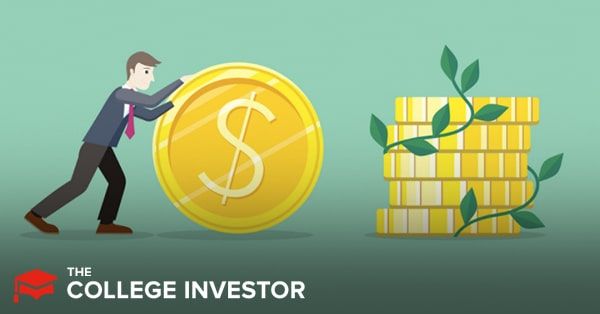
Blockchain technology has opened up new markets for investment and consumption. And one of the hottest recent trends in this space has been the production and sale of non-fungible tokens (NFTs).
NFTs are one-of-a-kind, authenticated digital files (such as artwork and collectibles). The fact that they can't be easily copied has caused some investors to get really excited about their ability to retain and gain value.
The hype around NFTs has been so strong that some have sold for millions of dollars. Is this an emerging asset class that you should be jumping into? Keep reading to learn more about what NFTs are, how to invest, and how to decide if you should.
What Are NFTs?
Non-fungible tokens (NFTs) are crypto-based tokens that are unique, authenticated and highly-valued in the crypto scene. Companies like SuperRare.co and others are making it possible to buy and sell NFTs in the secondary bitcoin market.
The first widely-recognized NFTs were “CryptoPunks” which launched in June 2017. This was a collection of 10,000 unique icons that were authenticated via the Ethereum blockchain. According to the LarvaLabs site, these NFTs sold for an average of $26,013, and have continued to rise.
Since this time, NFT have proliferated, and investors and digital art enthusiasts can buy one-of-a-kind art on the Etherum block chain through several markets. The NFT market is also thriving in gaming communities and music enthusiasts. And even professional sports players are beginning to get in on the action by producing NFT trading cards.
Understanding Fungibility
Fungibility means that resources can be swapped on a one-to-one basis. US Dollars are often considered the world’s most fungible asset. They can be traded for goods, services, and other currencies quickly and with low transaction costs.
Other resources, such as cryptocurrencies, gold bars, and lesser known currencies are still fungible, but slightly less so. Commodities such as lumber, wheat, or oil are sometimes considered fungible. However, these items aren’t perfectly interchangeable with one another (as a petroleum chemist will be happy to explain to you).
In the physical world, items run the gamut from perfectly fungible (money) to perfectly non-fungible (a child’s missing blanket at 8:30 PM). Of non-fungible items, art tends to be one asset that is both non-fungible and often grows in value over time.
The same trends that make artwork valuable in the offline or physical world are driving the value of artwork in the digital world. Interestingly, cryptocurrency is actually making the world of art sales more transparent.
Because all NFT activity is done via the blockchain, it's nearly impossible for someone to fake the provenance of digital work. And provenance is one of the biggest aspects of authenticity (and potential value).
NFT Investment Outlook
If the world of crypto-currency investing is the wild west, then NFT is the Alaskan Frontier. They've been purchasable since at least 2016, but the market just recently started taking off. It grew by 299% in 2020 alone according to the Non-Fungible Tokens Yearly Report.
Whether to invest in a market like NFT is a personal decision. It’s unlikely that experience with stocks, ETFs, or even cryptocurrencies will help you become a lucrative investor in this space.
Why is this? Because, by design, the supply for any particular NFT is static (there is only 1). Therefore, changes in demand for that one item will drive prices rather than fundamental or technical indicators or the economic outlook.
Many people may be able to dip their toes into the NFT waters by buying some low-cost digital artwork that is valuable to them personally. Even if it proves to be unsaleable in the secondary market, it will be enjoyable while the investor owns it.
How To Invest In An NFT?
If you’re interested in buying NFT, you'll most likely need to to use Ethereum (ETH). Once this cryptocurrency is in your wallet, you can browse sites like Rarible or SuperRare to find the best digital artwork. These sites show prices and (where applicable) the price history for digital artwork.
However, the NFT market is still highly decentralized. There are services like OpenSea and Rarible that are like eBay for NFTs, and many of the biggest transactions take place on these exchanges.
Potential investors may want to browse all these sites before committing to one NFT investment style. It’s also worth noting that many NFTs can be purchased for around $100-$200 while the most popular NFT have prices well above $10,000. For those who are just trying to see what the buzz is about, a lower price point purchase may be better than jumping in with a five-figure purchase.
Final Thoughts
You may make a fortune by investing early in NFTs. But you could just as easily lose all your money. At this point, it may make more sense to reserve NFT to a sort of “sandbox” position in your portfolio.
Over the long haul, real assets such as shares of stock, real estate, and even boring index funds are likely to produce investment returns in excess of inflation. It remains to be seen whether blockchain-based art will also be able to produce such returns.

Robert Farrington is America’s Millennial Money Expert® and America’s Student Loan Debt Expert™, and the founder of The College Investor, a personal finance site dedicated to helping millennials escape student loan debt to start investing and building wealth for the future. You can learn more about him on the About Page or on his personal site RobertFarrington.com.
He regularly writes about investing, student loan debt, and general personal finance topics geared toward anyone wanting to earn more, get out of debt, and start building wealth for the future.
He has been quoted in major publications, including the New York Times, Wall Street Journal, Washington Post, ABC, NBC, Today, and more. He is also a regular contributor to Forbes.
Editor: Clint Proctor Reviewed by: Chris Muller
